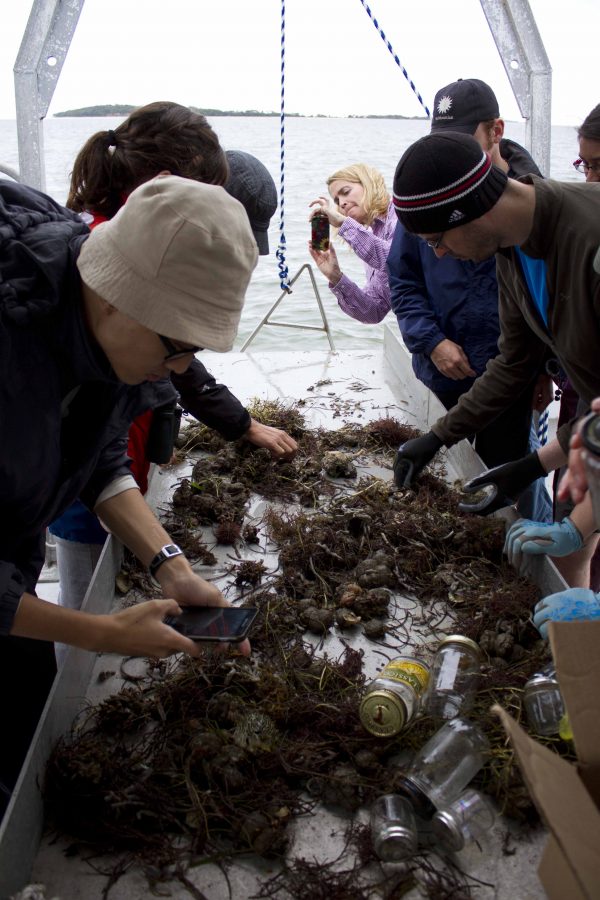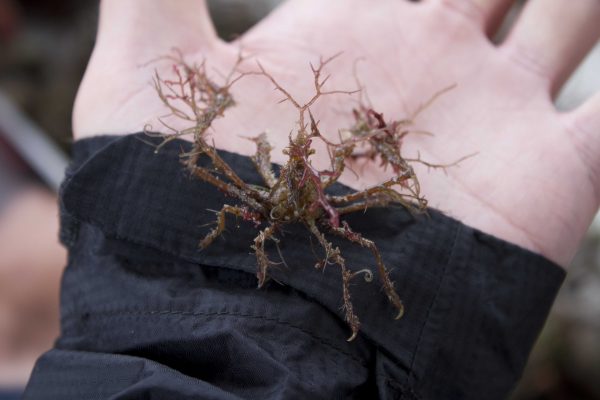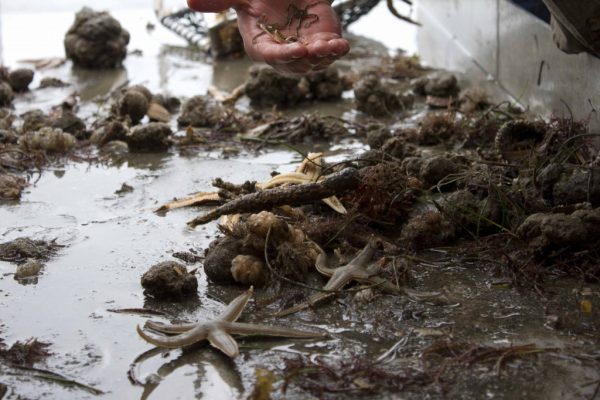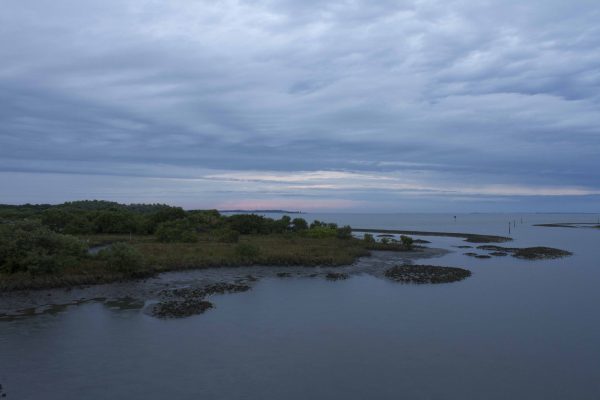During the winter holidays every year, hundreds of “snowbirds” travel from the northern U.S. and Canada for the warmth of the South Florida sun.
But there’s always the occasional cold spell.

Florida Museum photo by Craig Segebarth
As luck would have it, temperatures in December 2012 dropped while Florida Museum of Natural History researchers searched for wildlife in Seahorse Key.
“We had a good time, but it was cold out there,” said Florida Museum malacology curator Gustav Paulay. “This was right after we’d had a really nice hot spell and the low tide was 7 in the morning. Of course, we had to be out there in wet clothing, and it was really cold and blowing.”
Despite the weather, researchers deemed their first multidepartmental BioBlitz a success, and hope to organize similar field trips in the future, Paulay said.
The term BioBlitz is usually reserved for field trips involving public volunteers, but the intent remains the same: collect or record any and every animal seen. Sometimes efforts are focused on a limited group of organisms and the fieldwork involves intense biological surveying, usually during a 24-hour period. The Seahorse Key participants spanned the umbrella of biology, including botany, invertebrate zoology and entomology.
“Each of our labs took some students, and in the process, they not only learned about the taxonomic group they work on, but also other groups,” said Akito Kawahara, assistant curator of Lepidoptera at the Florida Museum’s McGuire Center for Lepidoptera and Biodiversity. “For example, my lab studies moths and butterflies, but through this project, we collected a lot of spiders and learned about other invertebrates. The BioBlitz was great because it taught students about the importance of field biology and allowed them to learn different groups of organisms they wouldn’t be able to study otherwise.”

Florida Museum photo by Craig Segebarth
Fourteen researchers participated in the overnight trip to Seahorse Key Dec. 12-13, organized by Museum staff and Jennifer Seavey, assistant director of the Seahorse Key Marine Lab. The trip was initiated to sort and label a marine invertebrate collection at the Seahorse Key lab, but researchers used the opportunity to try out a specialist-based BioBlitz, Paulay said.
“When you get the public involved, you can use it as an opportunity to open their eyes to the diversity of life out there,” Paulay said. “I’m sure we will go down that road in the future, but this one was sort of a professional thing where a bunch of us who are interested in nature get together – imagine professional musicians jamming versus a public sing-along.”
Researchers dredged the waters for marine life from a boat during the day, captured moths at night and collected sea creatures by hand during low tide in the early morning.
“This was a great way to have an informal workshop where we all learn about these different groups and also cross-pollinate our labs,” Kawahara said. “A lot of students otherwise don’t get to interact because we work in different buildings on campus.”

Florida Museum photo by Craig Segebarth
Kawahara said it was interesting to see the techniques different departments use for collecting samples, from an underwater light that attracts nocturnal marine animals to a suction tube that pulls out a layer of Earth’s sediments and the organisms within.
“Being moth people and working at night, the lepidopterists are the slow ones to get up in the morning,” Kawahara said. “But a couple of us managed to get up and we went out to see what they were looking for and it was really great – the tide had gone out so far that you could walk out and see horseshoe crabs, all kinds of shrimp and echinoderms, starfish and seahorses. You could just pick up this stuff and look at it – it was amazing.”

Florida Museum photo by Craig Segebarth
Paulay’s lab helped clean, sort and label the Seahorse Key collection, while Kawahara’s lab recorded nearly 100 species of moths and spiders during the 24-hour BioBlitz. Kawahara said he hopes the new information will help researchers better understand what is living in their own backyard.
“There hasn’t been thorough work done on terrestrial invertebrates of our local fauna, so we don’t know what’s actually out there,” Kawahara said. “We conduct fieldwork far from Florida, but we also need to know what the diversity is like right here, and I think that’s really important.”
Learn more about the Invertebrate Zoology Collection at the Florida Museum.